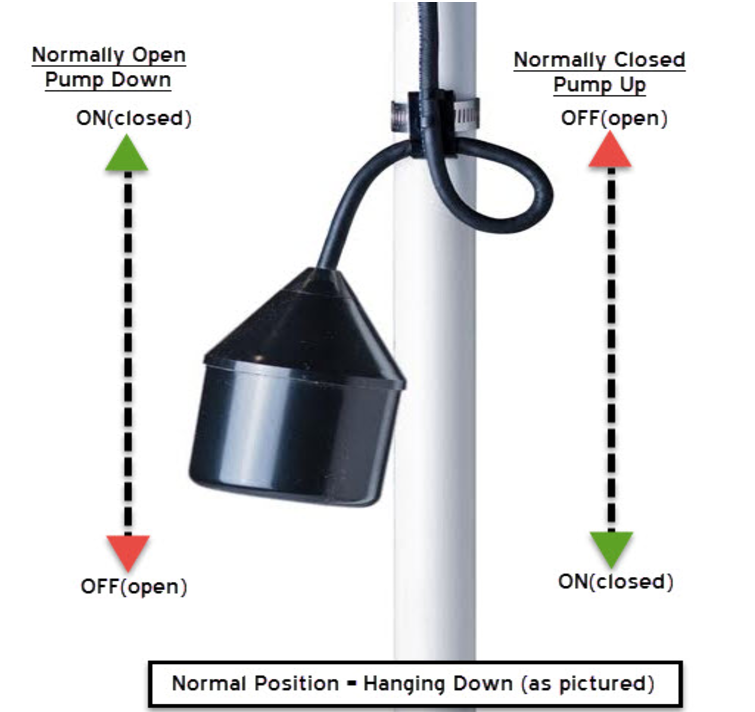What is a “Float Switch”?
A float switch is a device that monitors the liquid level in a tank or sump. Inside the sealed float housing is a set of contacts that, when closed, will complete an electrical circuit. The circuit can be completed by either mechanical or mercury means. They are used to activate and deactivate pumps, alarms, timers, etc.
Pump Switch Vs. Control Switch
When controlling a pump directly, a pump switch can be wired directly into the motor housing, spliced into the pump’s power cable, or the pump can plug into the switch via a piggyback plug. Since pump switches carry the full amperage of the pump, make sure the float you pick will be able to handle your specific pumps amperage. When controlling a pump indirectly (such as timed dosing), Control switches are used to send an on or off signal to a control panel, alarm, PLC, and more. Control switches are NOT rated to carry the amperage of a pump.
Normally Open Vs. Normally Closed
Normally Open (NO) and Normally Closed (NC) refer to the state of electrical circuit when the float is at rest (hanging in an empty tank). A normally open float does not allow electricity through it when the float is freely hanging. As water flows into the tank and raises the float, its contacts will close and power will flow through and to the pump. These are utilized for most dewatering, sump, and sewage pumps.
A normally closed float is just the opposite; it’s contacts are closed when the float is freely hanging. As water flows into the tank and raises the float, its contacts will open and power will cease to flow to the pump. These are utilized for filling applications, such as filling a cistern with a well pump.

Need help selecting a float switch? Give us a call at 855.329.4519.